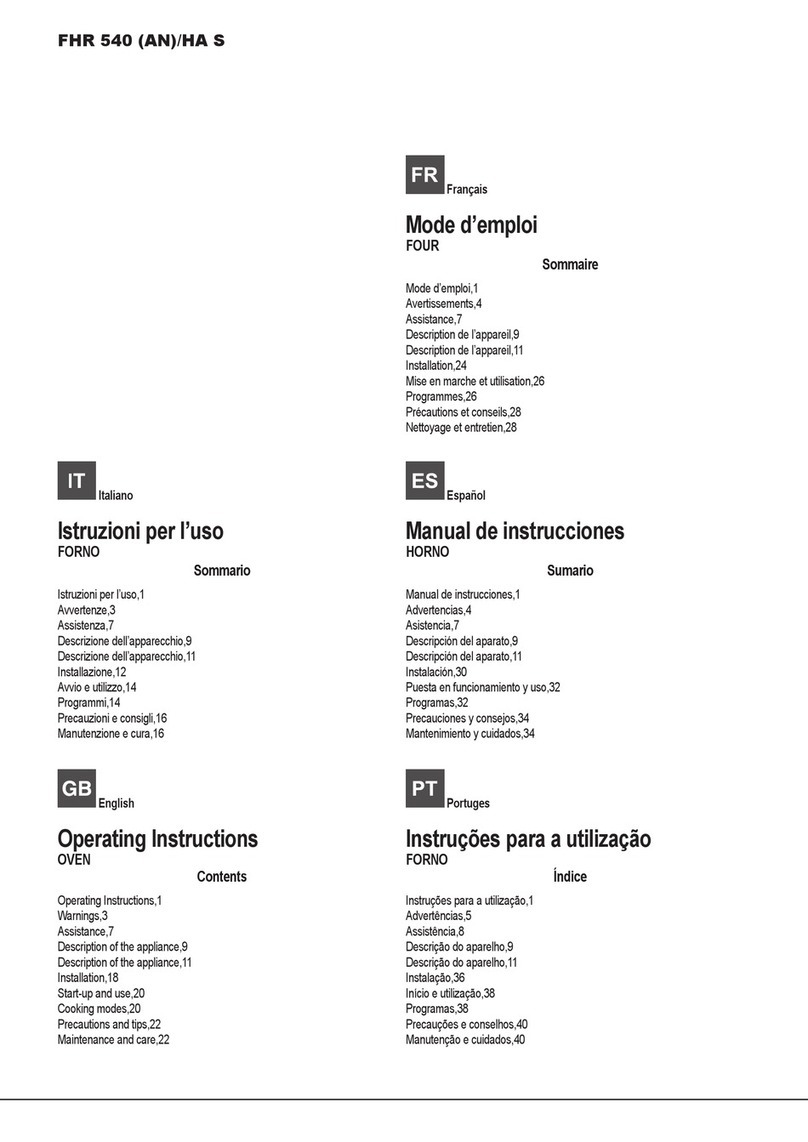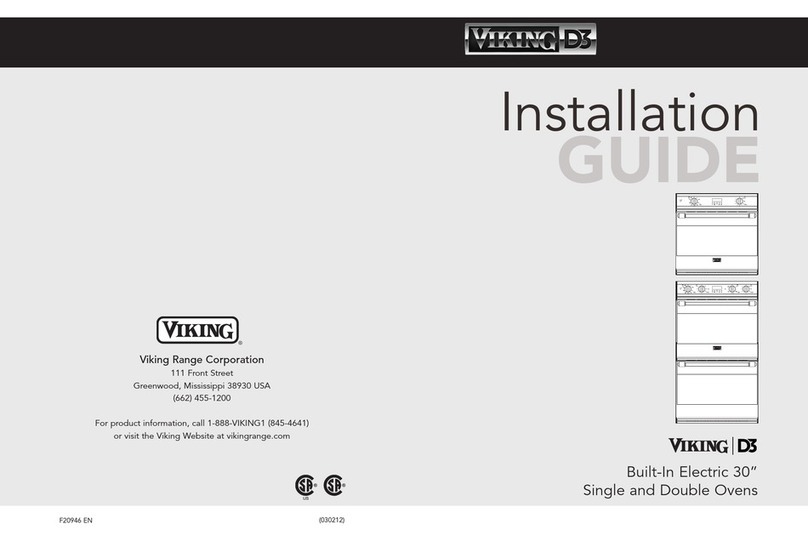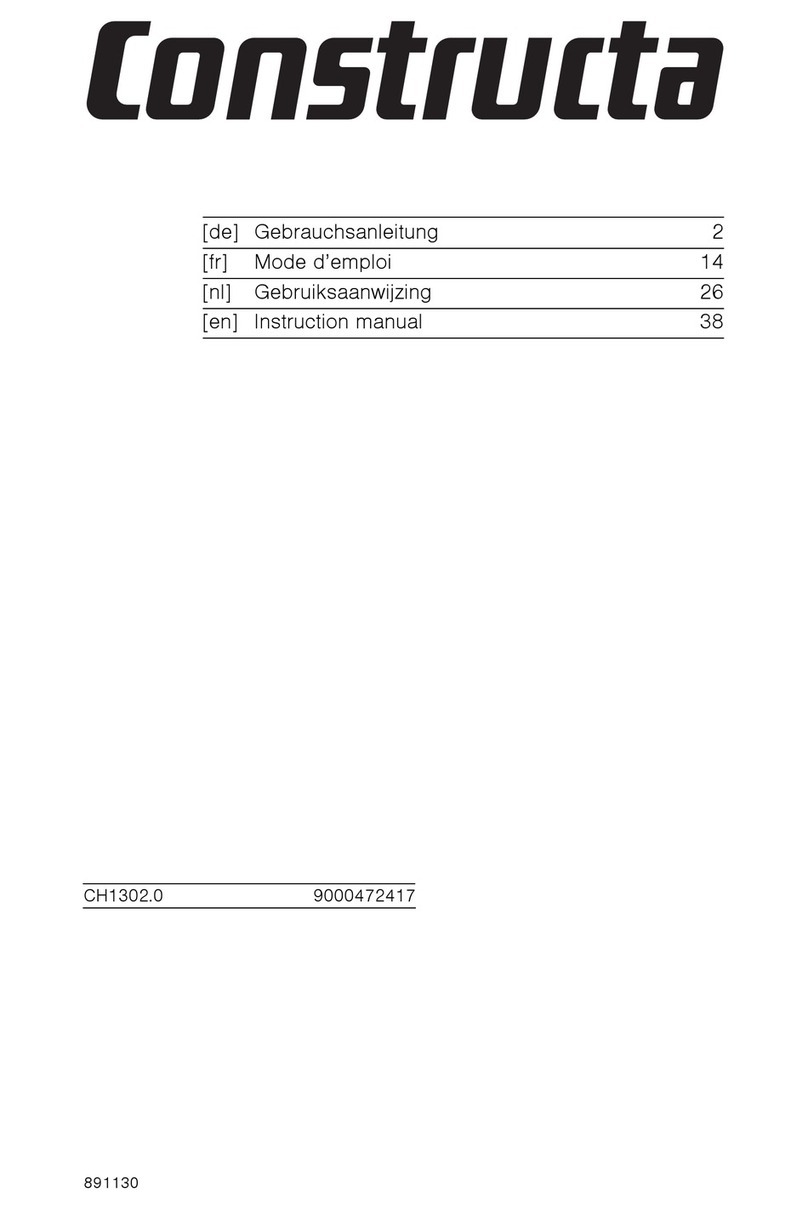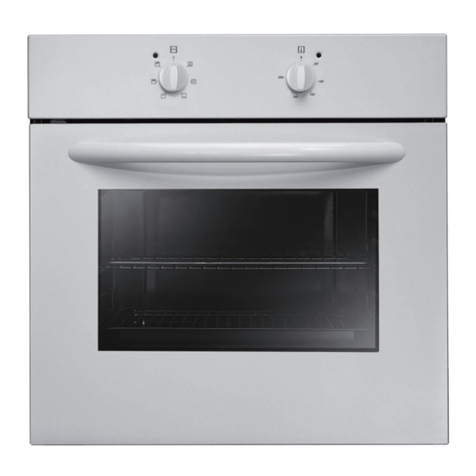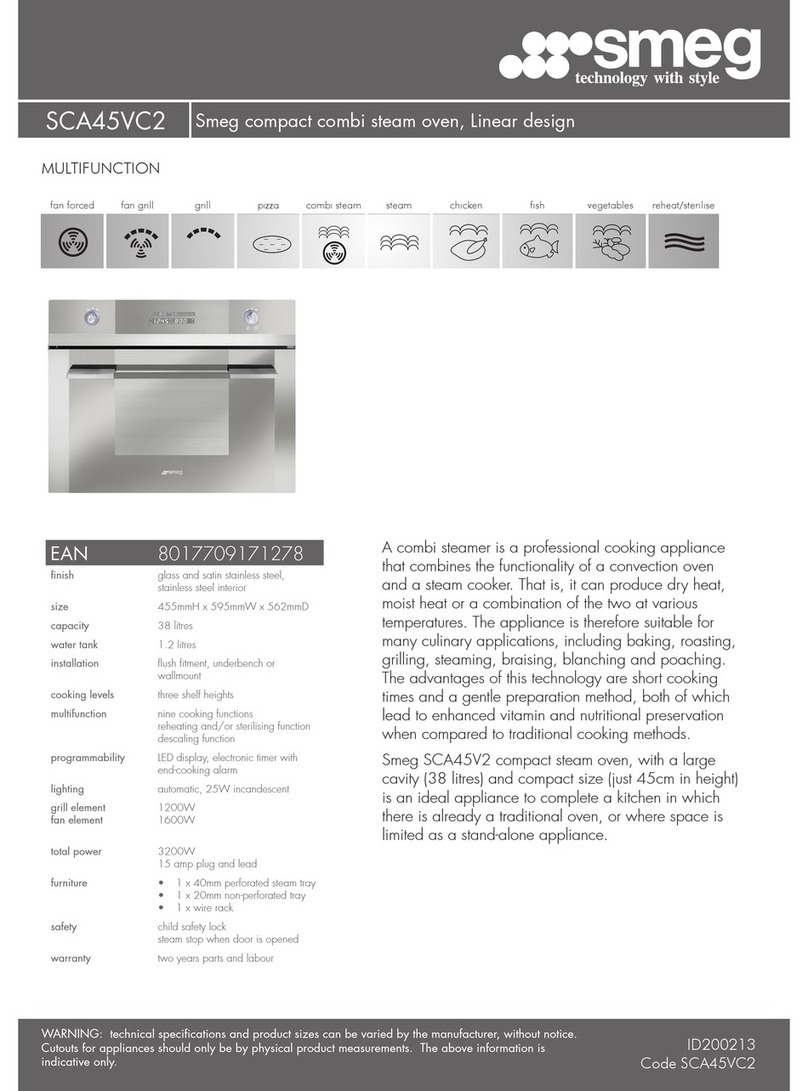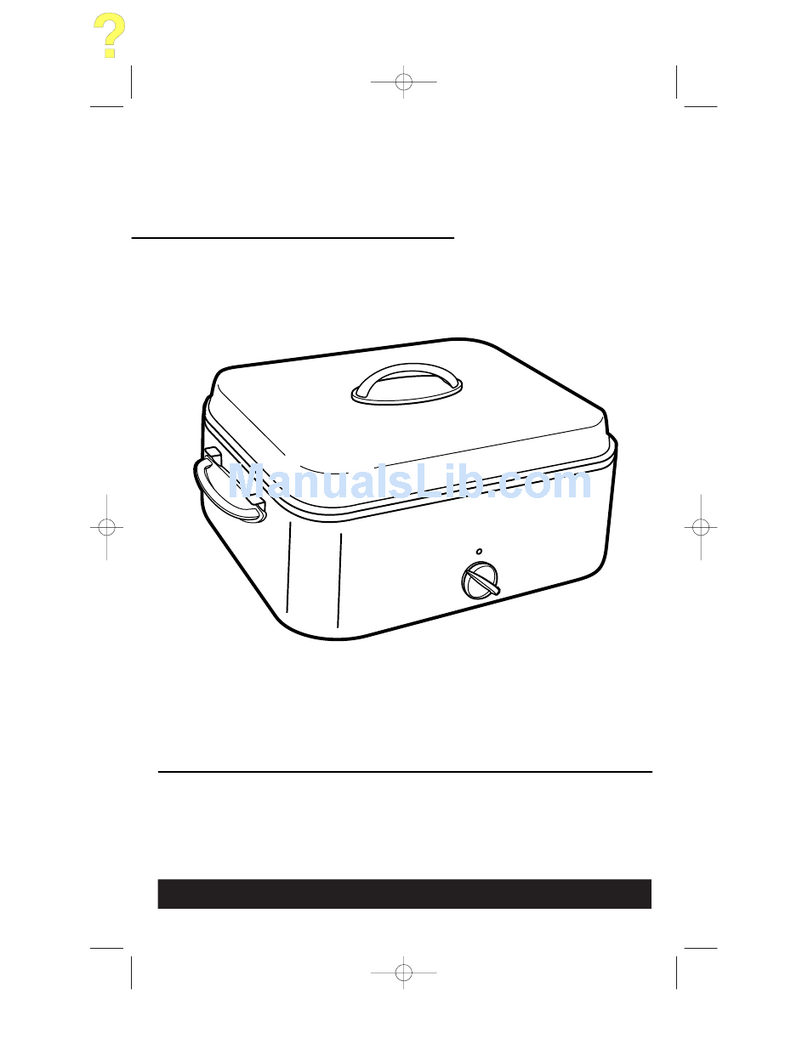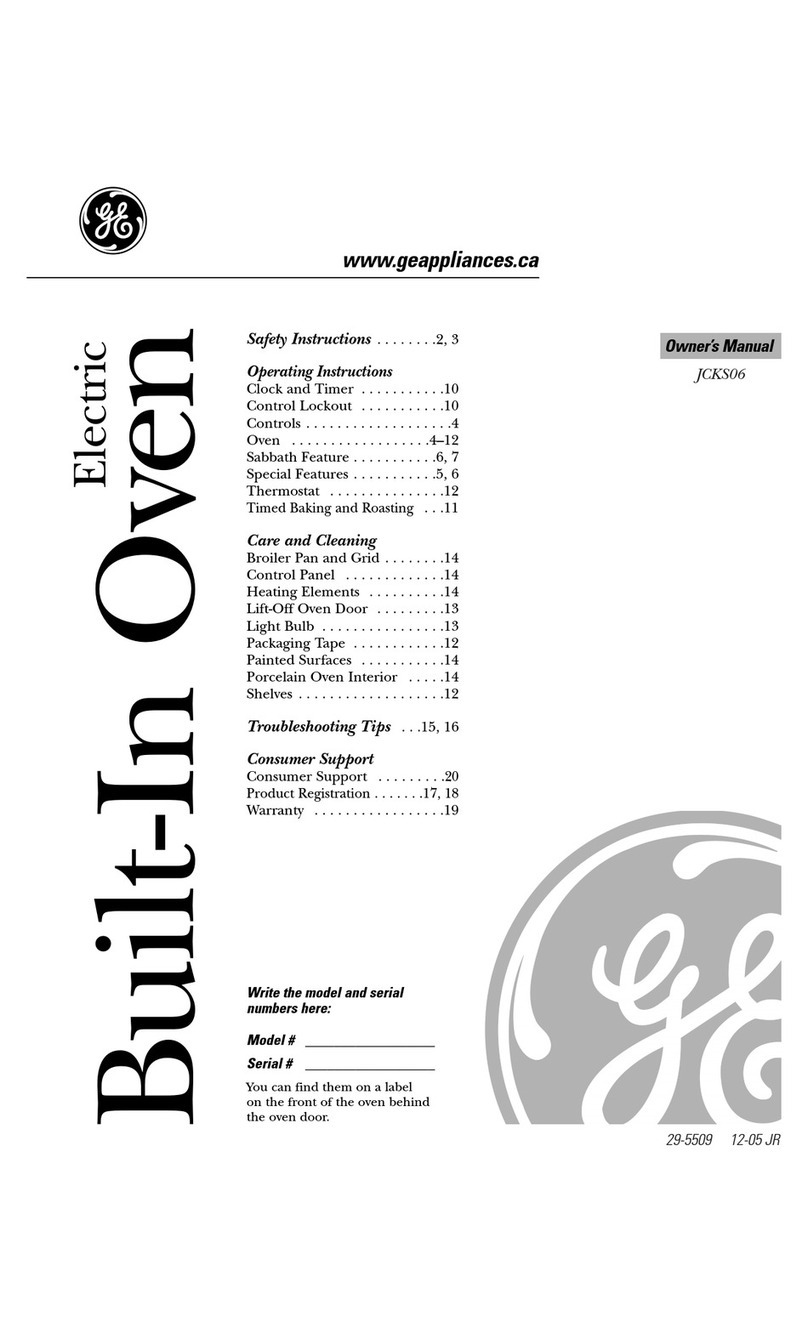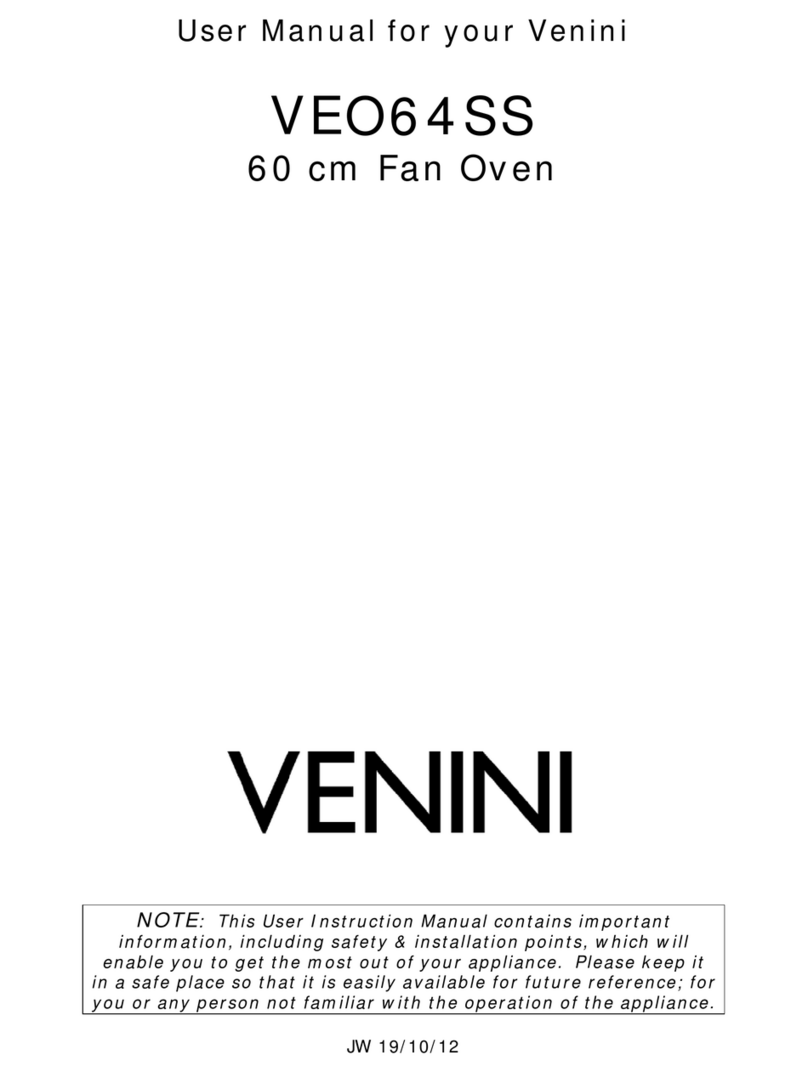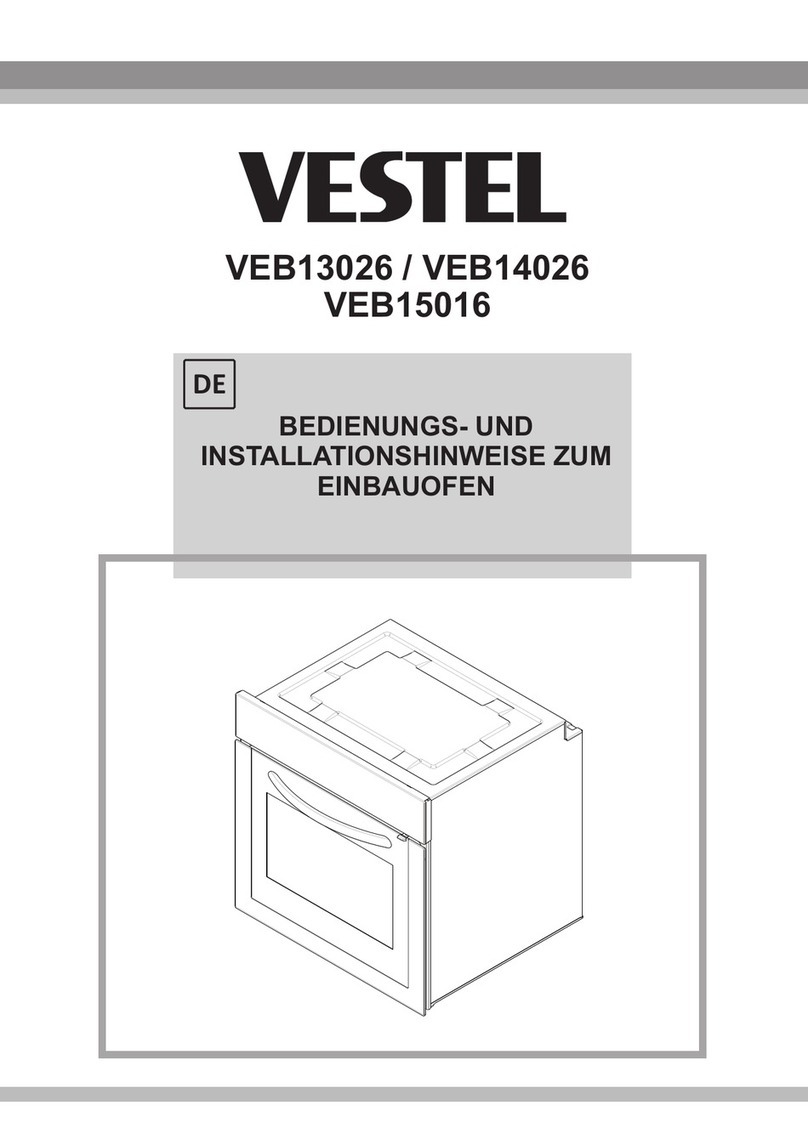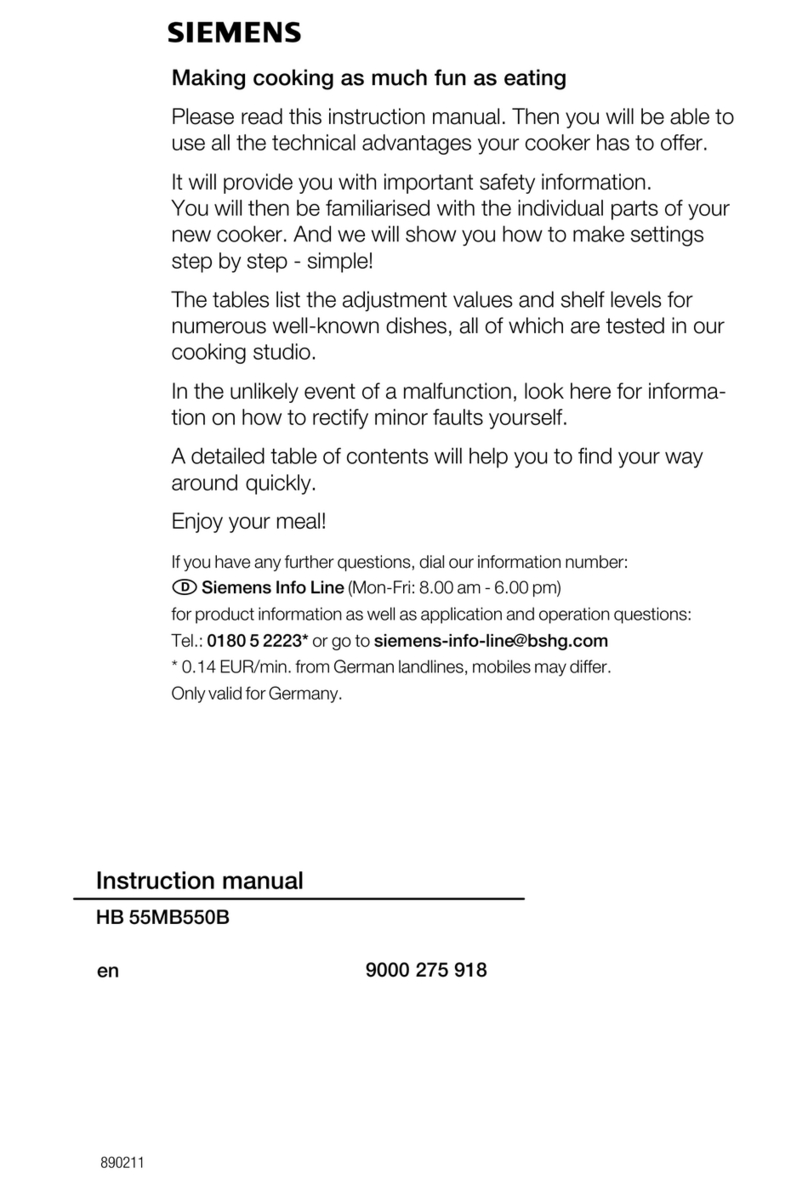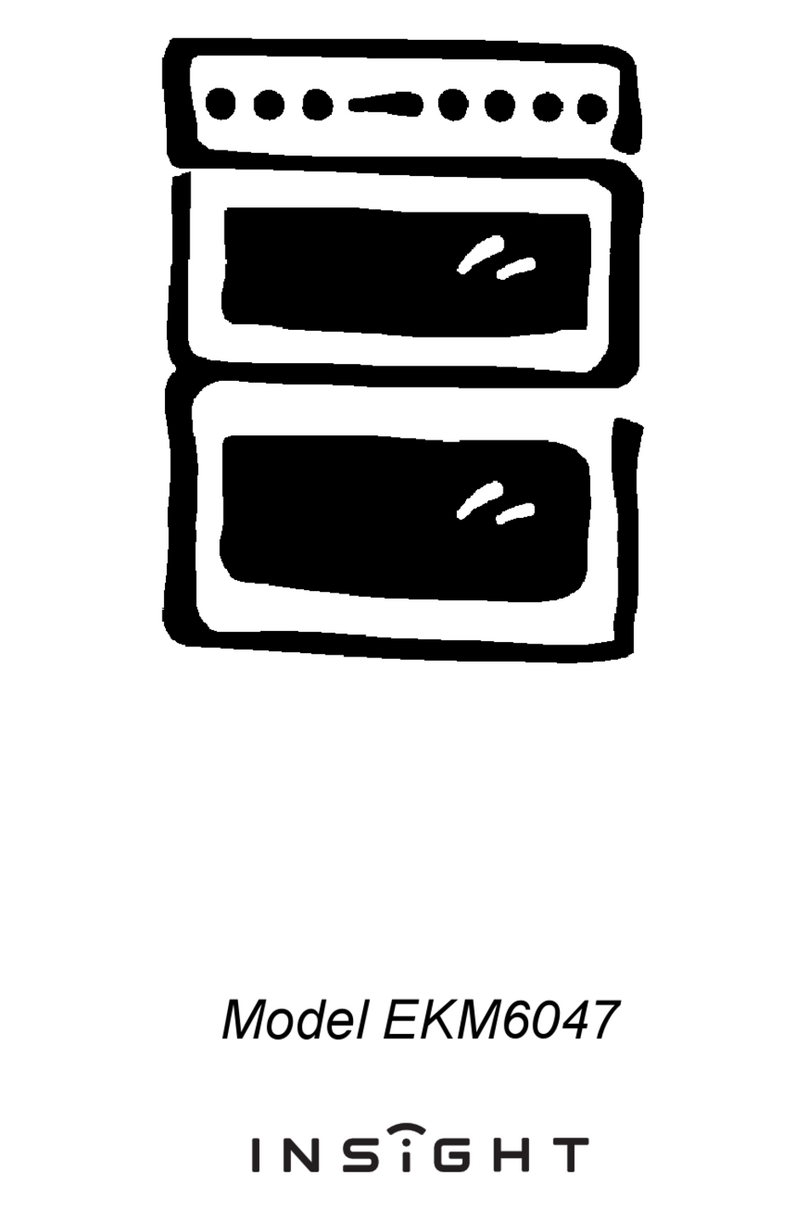ADA GASTROGAZ ADA 1 User manual

2
Dear Sirs,
Thank you for the credit shown us by buying our product, gas rottiserie. We hope that
the device which you own will fulfill all your expectations. Gas rotisserie provides a short
cooking time chickens to high palatability.
Before using a gas rotisserie you should read contents of this manual, guidelines and
recommendations for proper installation, use and maintenance. Following instructions
will ensure long and reliable operation of this rotisserie.
ADA gas rotisseries are certified appliances, which means that they have, among others
CE mark and are covered by compliance procedures verified by the Oil and Gas Institute
in Krakow - National Research Institute. They meet the requirements of Regulation (EU)
2016/426 of the European Parliament and of the Council of 9 March 2016 relating to
appliances burning gaseous fuels, as well as the requirements of the Low Voltage
Directive LVD 2014/35/EU, and the Electromagnetic Compatibility Directive EMC
2014/30 / EU and the National Institute of Hygiene.
ADA Gastrogaz
MANUFACTURER

3
CONTENT
1. General remarks 4
2. Destination of the appliance 5
3. Technical characteristic and equipment 6
4. Instructions for the gas appliance installer 9
4.1. Gas installation 9
4.2. Electrical installation 10
4.3. Appliance installation 10
4.4. Assembly order 12
4.5. Burner’s adjustment 13
5. Instructions for use and maintenance 14
5.1. Using the appliance 14
5.2. Cleaning the appliance 14
5.3. Solving the problems 15
5.4. First aid 16
5.5. Warnings 16
6. Conditions of the guarantee certificate 18
Guarantee Certificate 19

4
1. GENERAL REMARKS
Before installing and/or switching on the appliance, it is necessary for the installer
and/or operator of the device to carefully read this manual and follow the instructions
and recommendations contained in it regarding the correct and safe use of the device.
Compliance with the operating instructions will ensure long-term and reliable operation
of the appliance, and thus bring benefits and satisfaction with the equipment
purchased. The only way to ensure the safe use of the device is to thoroughly
understand the principles of proper installation, operation and maintenance.
This manual is an integral part of the device and must be stored with it in a safe place, so
that all users and technical service authorized to repair and / or service the equipment
have access to it. If the owner changes, this instruction must be given to the new owner.
This appliance may only be used for the purposes for which it was designed. Any other
use can be dangerous to the operator. The manufacturer is not liable for damages
resulting from improper use. Parts that have been marked / protected against
unauthorized interference must not be adjusted by the user.
Installation of the device should be carried out by authorized persons according to the
manufacturer's instructions and in accordance with applicable standards. Improper use
may cause a risk for which the manufacturer cannot be held responsible.
After completing the installation of the device, the packaging components must not be
kept within the reach of children, as they may cause hazards. Therefore, they must be
disposed of (also for environmental protection reasons) in accordance with applicable
regulations.
Before starting the appliance, make sure that the type of gas you have corresponds to
the one for which the appliance was factory-set.
The manufacturer reserves the right to change the technical parameters of devices
affecting the increase of operational values, without notice. Photographs, drawings and
descriptions of devices are for reference only.

5
2. DESTINATION OF THE APPLIANCE
Rotisserie type ADA is designed primarily for roasting chickens or other meat joints.
Rotisserie "ADA" can be mounted on catering trailers, catering cars, as well as used in
bars, shops and other catering establishments.
Our machines are characterized by high durability, reliability in operation, small
gas consumption and a short roasting time.
Fig. 1. Gas rottiserie ADA 5

6
3. TECHNICAL CHARACTERISTIC AND EQUIPMENT
Rotisseries ADA are made of stainless steel. The upper part of the combustion flue
formed in the shape of a truncated cone with a vertical nozzle. Below is the heating
chamber with double-leaf door made from tempered glass. Housing is located on a flat
base. At the front, the right side of the rotisserie are mounted knobs for the gas
adjustment with thermoelectromagnetic protection system.
On the left side of heating chamber are electric switches for drive mechanism and light.
The drive mechanism has 1 engine powered by AC 230V/60W with chain transmission
for spits. Rotisseries can be powered by natural gas or LPG. For each type of gas are
selected appropriate nozzles
Rotisseries ADA have 2 sets of spits. First row of spits is situated directly on the front of
the burners. Second row is situated slightly closer to the door and located in gaps
between the first rows of spits.
Fig. 2. Construction diagram of ADA gas rotisserie
1. Engine and light switch, 2.Gas adjustment knobs, 3.Gas burner, 4.Roof with chimney, 5. Drip tray,
6.Drain Valve, 7.Thermal evaporation sensor, 8. Tempered door, 9. Spit, 10. Cover panel
The ADA gas rotisserie is opening at the front and has two rows of forks. The first row is
placed at the height of the individual burners. However, the second row is set in the
gaps of the first row. It absorbs heat energy that passes between roasted chicken on
first order forks. Thanks to this solution, the following benefits were achieved:
• chickens on the first order forks are cooked by 10% shorter than the second-row
chickens,

7
• the spit not only achieves increased efficiency, but also thanks hanging the forks with
special holders, you can heat the already roasted chickens on the second row.
Basic equipment (added to each spit):
• a set of forks,
• bathtub for grease,
• set of masking strips (mirrors),
• two handles for pulling forks,
• nozzle cleaner (located inside the housing on the right
page)
• lighter.
Additional equipment (optional):
• baskets for legs or knuckles,
• rack (on wheels or without and with a drawer),
• cabinet (on wheels or
without and with a drawer or without).
Gas Chicken Rotisserie ADA 1U
Technical data
ADA 1U
Thermal power [kW]
7
Number of burners [pc.]
2
Propane gas consumption [kg/h]
0,49
Natural gas consumption [m3/h]
0,73
Number of chickens [pc.]
6 –8
Number of forks [pc.]
2
Length of fork [mm]
645
Power supply [V]
230
Electrical power [kW]
7,04
Weight [kg]
30
Dimensions [mm]
860 x 420 x 560

8
Gas Chicken Rotisseries ADA 1 –ADA 3
Technical data
ADA 1
ADA 2N
ADA 2
ADA 3
Thermal power [kW]
7
10,5
14
17,5
Number of burners [pc.]
2
3
4
5
Propane gas consumption [kg/h]
0,56
0,84
1,12
1,40
Natural gas consumption [m3/h]
0,73
1,10
1,46
1,82
Number of chickens (1st row) [pc.]
6-8
9-12
12-16
15-20
Number of chickens (2nd row) [pc.]
3-4
6-8
9-12
12-16
Number of forks [pc.]
2+1
3+2
4+3
5+4
Length of fork [mm]
640
640
640
640
Power supply [V]
230
230
230
230
Electrical power [kW]
0,23
0,23
0,23
0,23
Weight [kg]
63
78
90
103
Dimensions [mm]
945 x 570 x 630
945 x 570 x 800
945 x 570 x 970
945 x 570 x
1140
Chimney diameter [mm]
132
132
132
132
Chimney height [mm]
100
100
100
100
Gas Chicken Rotisseries ADA 4 –ADA 8
Technical data
ADA 4
ADA 5
ADA 6
ADA 7
ADA 8
Thermal power [kW]
20
25
30
35
40
Number of burners [pc.]
4
5
6
7
8
Propane gas consumption
[kg/h]
1,60
2,00
2,40
2,80
3,20
Natural gas consumption
[m3/h]
2,08
2,60
3,12
3,64
4,16
Number of chickens (1st
row) [pc.]
20-24
25-30
30-36
35-42
40-48
Number of chickens (2nd
row) [pc.]
15-18
20-24
25-30
30-36
35-42
Number of forks [pc.]
4+3
5+4
6+5
7+6
8+7
Length of fork [mm]
985
985
985
985
985
Power supply [V]
230
230
230
230
230
Electrical power [kW]
0,26
0,26
0,26
0,26
0,26
Weight [kg]
132
149
172
186
200
Chimney diameter [mm]
195
195
195
195
195
Dimensions [mm]
1285 x 570 x
1120
1285 x 570 x
1290
1285 x 570 x
1460
1285 x 570 x
1630
1285 x 570 x
1800

9
4. INSTRUCTIONS FOR THE GAS APPLIANCE INSTALLER
4.1. Gas Installation
Connection of the appliance to the gas installation can only be carried out by a person
with appropriate qualifications. Parts that have been secured by the manufacturer may
not be adjusted by the installer.
The appliance can be connected to the B/P supply via a gas pressure reducer or natural
gas E and will therefore be equipped with a suitable (in accordance with the order) gas
connection:
1) B/P - with a ø12 tip for B/P systems for a flexible hose,
2) natural gas E - with external thread G ½ for natural gas E (G20) (fig. 3).
Fig. 3. Natural gas connector
A change of gas type may only be carried out by authorized persons. To change the type of
gas, replace the set of gas burners and adjust the pilot burner.
Warning!
The chimney reaches a high temperature, which is why you should pay attention to
maintaining a proper distance from the wall.
The device should be placed in such a way as to ensure ventilation to an appropriate exhaust
hood or ventilation system. This is essential for the effective removal of flue gases and odors
generated during the cooking process. The extractor hood must be designed so that it does
not interfere with the operation of the appliance. If the rotisserie is connected to a forced
exhaust system, an automatic gas shut-off system should be applied to the appliance in the
absence of draft, which will prevent the device from working with inefficient exhaust
ventilation.

10
4.2. Electrical installation
• 230V AC motor with reduction gear adapted for
work at high temperatures,
• Single-stage switch (turns on and off the drive - gear motor),
• Internal wires resistant to high temperature,
• External power cord with plug,
• Protective grounding clamp.
Fig. 4. Electrical installation diagram of the ADA gas rotisserie
4.3. Appliance installation
The room in which the gas installation is installed and the appliance is planned to be
installed should have continuous air exchange (inflow of sufficient amount air, needed
for gas combustion and exhaust gas outlet) protecting against exceeding in the air,
inside the room, the permissible content of exhaust components harmful to human
health. This condition is very important for the safety of the user and the efficient
operation of the air exchange system must not be prevented.
Based on these regulations, the room in which the device will be installed should meet
the following requirements and have:
• Efficient supply and exhaust ventilation ensuring air exchange of at least 37.5 m3 / h
for each kilowatt of thermal power of the gas device.
• the minimum dimension of the flue must not be less than 0.14 m, and the total area of
the ventilation duct not less than 0.016 m2;
• Appropriate cubature that will ensure that the maximum heat load from gas
appliances does not exceed 930 W / m3 of room.
• Adequate dimensions that ensure that the installed device is at least 0.3 m from the
nearest room walls (sides and back of the device) and the front is at least 1.2 m. The
walls and floor should be non-flammable. Flammable materials should be at least 5 m
from the front of the device.

11
• When using a device for liquid gas, such rooms must not be below ground level, i.e. in
the basement or basement, and the temperature of the room where the B / P gas
cylinder is located must not exceed 35 ° C.
In order to ensure proper ventilation at all times inside and around the gas cylinder
compartment, obtain a constant supply of fresh air and prevent the accumulation of
unburned gases, make sure that the device and the cylinder are close to the opening
window; if the equipment is in a closed room, it must be installed with an efficient
ventilation hood or shaft.
Warning!
Pursuant to the applicable provisions of the Building Law, liquefied gas may not be
used in the building in which the natural gas installation is located.
The appliance can be powered by 11 and 33 kg gas cylinders. The maximum dimensions
with a reducer for a 11 kg cylinder are 65 x 35 x 35 cm, while for a 33 kg cylinder it is 130
x 37 x 37 cm. A liquid gas cylinder should:
• put at least 1.5 m from heat radiating devices,
• cylinders should not be placed in the vicinity of other sparking devices,
• install cylinders in an upright position and secure them against falling, falling over or
accidental displacement.
Gas supply pipes or hoses should meet applicable national requirements and should be
periodically checked and replaced if necessary.
When installing the appliance, observe the following applicable regulations:
• Standards, regulations, building and fire regulations.
• Health and safety regulations.
• Regulations issued by gas suppliers, which should also be used to confirm the approval
of the installation of the device.
• Standards, regulations, ordinances for gas installations and gas-powered equipment.
• Standards, regulations, ordinances regarding ventilation.
The appliance installer should:
• Have a qualification certificate.
• Read the information on the rating plate. Compare the information with the gas
delivery conditions at the place of installation.
• Check the gas valve connections for leaks.
• Check the effectiveness of all components of the device's operation.
• Familiarize the user with the operation of the device.

12
4.4. Assembly order
Determining the right location for the rotisserie is extremely important for the proper
operation of the appliance, speed and convenience.
Before installation, check that all appliance parts are included and not damaged during
transport.
1. Place the appliance in a place that allows easy access from front side, on a hard and
non-flammable surface. The distance from non-flammable walls should be at least 10
cm (the distance between back of the appliance and wall should be at least 30 cm).
If the walls are not resistant to high temperatures, use appropriate insulation and keep a
minimum distance of 30 cm. Also keep a distance of at least 20 cm from other devices.
2. Level the appliance.
Warning!
Incorrect use of the appliance can cause oil to burn and fry, which can cause severe
burns, injury, as well as fires and equipment damage.
3. Before connecting the appliance to the gas installation, check on the rating plate to
which gas type the appliance is adapted and whether it corresponds to the type of gas in
the gas installation (propane-butane B / P or natural gas E).
4. Make the connection in accordance with the following rules:
• connection to natural gas should be made:
a) rigidly using seamless pipes (steel or copper);
b) or using a metal braided hose with a CE safety certificate;
• connection of B/P from a gas cylinder should be made with a flexible hose
with max. 1.5 m long, with CE safety certificate. The ends of the hose must be
secured with hose clamps.
5. A gas shut-off tap must be installed on each gas appliance and it should be easily
accessible.
6. After connecting the device to the gas installation, check for leaks using appropriate
sensors, paying particular attention to the connection points. The appliance must not be
put into operation after a leak has been detected.
Warning!
Never check the tightness of the gas system with a lit match or flame. This could cause
a fire or explosion and cause serious injury or material damage. The device must not
be put into operation after a leak has been detected.

13
7. After completing the installation of the device, the packaging components must not
be kept within the reach of children, as they may cause hazards. Therefore, they must
be disposed of (also for environmental protection reasons) in accordance with
applicable regulations.
Gas supply pipes or hoses should meet applicable national requirements and should be
periodically checked and replaced if necessary.
4.5 Burner’s adjustment
Burner power and gas savings can be adjusted by the regulation of the needle gas
valve, located on the front the rotisserie under gas knob.
Warning!
Do not twist the needle to the left more than three full turn’s of screwdriver. Further
loosening may lead to completely unscrewing the needle and uncontrolled gas flow.

14
5. INSTRUCTIONS FOR USE AND MAINTENANCE
Each appliance has been thoroughly inspected and tested before shipment. However,
it is good practice to check the device before starting it.
5.1. Using the appliance
Before using the rotisserie, make sure that all gas knobs are in the closed position,
then open the faucet installation of gas mains (the valve on the cylinder or on the
power cord).
Knob should be set to "max", press and hold for about 15 seconds. During this time, the
gas flows to the burners which are to be ignited ignition. If the flame goes out when
knob is released whole operation must be repeated. In the first case it takes longer
because the pipes must be purged from air. After about 5 minutes burner should glow a
raspberry colour. If you do not get this colour it means that the burner does not get
proper power (leaky installation, clogged nozzle, faulty pressure regulator or pressure
drop gas supply installation spit). Defect must be reported to distributor.
Fig. 5. Marking on the gas valve knob
5.2. Cleaning the appliance
Internal and external walls do not burn. They can be easily washed off with a properly
adapted cleaning agent. Reflectors (mirrors) located between the burners can be
covered with aluminum foil, protecting them against dirt from grease, they can also be
easily dismantled and washed. The device should be kept clean at all times.
Warning!
In order to avoid the risk of fire, you should regularly clean the inside of the heating
chamber. All dirt and unwanted bodies (especially in the immediate vicinity of the

15
burners and forks) should be removed immediately. Do not start the device if the
heating chamber is not cleaned!
If not all burners are used, we always use the lowest ones. No dripping fat should get
into unused burners. It contains spices that can destroy ceramics. After each prolonged
immobilization, the device should be "burned out" for a period of 5-10 min. Stainless
steel surfaces can be cleaned with suitable chemicals. The forks should also be kept
permanently clean (e.g. by dipping them in water for several hours).
Ceramic furnaces are not cleaned mechanically or with chemical agents. We do not use
water or steam jet. We let them burn (automatically).
Make sure you choose the right cleaner, and do not use steel wool or other cleaning
tools or cleaning agents / disinfectants containing chlorine, bromine, iodine or
ammonia, as these substances will damage stainless steel and shorten the useful life of
the device.
Only clean the appliance when it is cold - otherwise there is a risk of burns.
5.3. Solving problems
Ceramic furnaces glow faintly or blue
Check the gas pressure or to clear the nozzle. Clean the nozzle with cleaning sticks
attached to the device. If contamination is very large unscrewed the nozzle from
housing and clean the nozzle in the wash solvent and then purged so that the light hole
was perfectly round.
The spits do not rotate properly
Loose drive chain. In such a case loosen the screws fastening the motor to the housing
and tighten the motor in the oblong holes. Tighten the fixing screws.
The burner goes out after lighting and releasing the gas valve.
Replace the thermocouple. To replace a used thermocouple, unscrew one end at the gas
valve and the mounting screws on the other side against the wall of the device housing.
Install the new thermocouple in the reverse order.

16
5.4. First aid
When providing first aid you should:
•call the appropriate medical services,
•facilitate breathing by removing clothing,
•If necessary, take the injured person into the fresh air,
•cover the injured person with a blanket and prevent them from falling asleep,
• constantly monitor the victim,
•in case the injured person loses consciousness and is not breathing, give artificial
respiration until the arrival of the doctor.
5.5. Warnings
To prevent accidental burns, device operating personnel should be trained and use
oven gloves in contact with working rotisserie.
Do not:
-open the main valve (on the bottle or the main gas) without checking
whether the valves are closed on the rotisserie
-allow burners to get wet
-make alterations to a different type of gas, and make changes to the gas
system and supply
-try to make repairs by yourself
-leave rotisserie unsupervised when is working
-store near combustible materials
-allow children to operate the barbecue or people not familiar with this
instructions
-use in places with poor ventilation system
-install in areas that hinder its operation
-Use an open flame, electrical and mechanical equipment that may cause an
electrical spark if you can smell gas. In this case, you should immediately close
the gas tap or bottle, thoroughly ventilate the area and if necessary call National
Grid at 0800 111 999.
-Accumulate hot drippings in drip tray. Please empty drip tray regularly.
After expiry of the warranty at least once a year performs a technical review of the
rotisserie with particularly on gas leak. This review should be carried out
preferably at the service of the manufacturer or by CORGI registered technician.
Warning!
Improper handling of the rotisserie can cause significant amounts of gas leak, bad burns
or explosion. Inhaling gas or carbon monoxide revealed tinnitus, heaviness, accelerated

17
heart rate, dizziness, vomiting and general weakness. If these symptoms appear –call
ambulance.
This device is marked in accordance with the European Directive 2012/19 / EU and the
Polish Act of 11 September 2015. "On used electronic and electronic equipment"
(Journal of Laws of 23.10.2015 item 11688) with a crossed out waste container . Such
marking informs that this equipment, after the period of its use, may not be placed
together with other household waste. The user is obliged to give it to the collectors of
used electrical and electronic equipment. Collectors, including local collection points,
shops and communal units, create an appropriate system enabling the delivery of this
equipment. Proper handling of used electronic and electrical equipment contributes to
avoiding consequences harmful to human health and the environment, resulting from
the presence of hazardous components and improper storage and processing of such
equipment.
At the end of the life of the equipment, return the device to the appropriate institution
that deals with the disposal of the devices. On behalf of the manufacturer, the contract
regarding the organization and provision of collection, processing, followed by recovery
and recycling and disposal of "Waste Equipment" shall be completed by:
Elektro-EKO
Electrical and Electronic Equipment Recovery Organization S.A.
ul. Łopuszańska95, Warsaw
ENVIRONMENTAL PROTECTION: Both the packaging of the new device and the old, used
devices contain valuable secondary raw materials and materials for recycling. Please
dispose of individual parts by type of material. Please inform your dealer or local
administration about the current disposal method.

18
6. CONDITIONS OF THE GUARANTEE CERTIFICATE
1. The User of ADA GASTROGAZ appliances is guaranteed by a direct Seller who sets out all the
rules for the warranty he grants through a sales contract concluded with the User.
2. The manufacturer provides warranty for parts for a period of 12 months for the Seller from the
date of sale of the device. The length of the warranty and the conditions for the User are
determined by the Seller upon conclusion of the sales / purchase contract for the device. The
manufacturer recommends carrying out periodic inspection at least once a year to ensure correct
operation of the device.
3. The seller undertakes to repair the device for free during the warranty period. The condition of
the warranty validity is compliance with applicable regulations and standards related to the
installation, use and maintenance of the devices. The faulty parts will be repaired in 14 days from
their record. Buyer has got the right to replace the device with a new one when any repair is
impossible.
4. The warranty does not cover the activities provided for in the operating instructions, which the
User is obliged to carry out on his own and at his own cost, e.g. installation, checking of operation,
cleaning, maintenance of the device and periodic inspections, etc.
The warranty does not apply to parts subject to normal wear and to some parts: in gas appliances
(light bulb, thermocouple, burner protection grid, ceramic plate, glass, gasket), in electrical
equipment (light bulb, glass, gasket).
5. In the event of any faulty operation of the device during the warranty period, immediately
inform the Seller. Complaints should be made in writing (by fax, e-mail or post).
6. Both the manufacturer and the seller shall not be liable for any direct or indirect damage
suffered by the User due to a product defect, in particular loss of profits or income, resulting
downtime, loss or damage of other equipment, costs of replacement goods, etc. Further claims are
also excluded. .
Both the manufacturer and the seller shall not be responsible for connecting the device to an
electric and gas supply inconsistent with the type plate, as well as for faulty assembly and damages
resulting from random events such as: fire, flood or lightning, etc.
7. The basis for accepting a complaint under the warranty is a device purchase document (invoice)
or other document signed by the Seller, containing the terms of the warranty granted. The user is
required to provide a document confirming the right to repair under the warranty. Lack of
document will result in the service being considered for a fee.
8. Unless the contractual terms provide otherwise, the warranty is calculated from the date of
issue of the document confirming the purchase of the device.
9. Compliance with the obligations arising from the guarantee will not extend or restart the
guarantee period.
10. The guarantee do not cover any damages caused in transport.

19
GUARANTEE CERTIFICATE
Appliance:
Fabric number:
Manufacturing date:
Manufacturer quality control sign:
Date of sale:
Sign and stamp of seler:
No.
The date of the
declared
complaint
The date of the
repair
The type of the repair
Sign and stamp
This manual suits for next models
8
Table of contents

